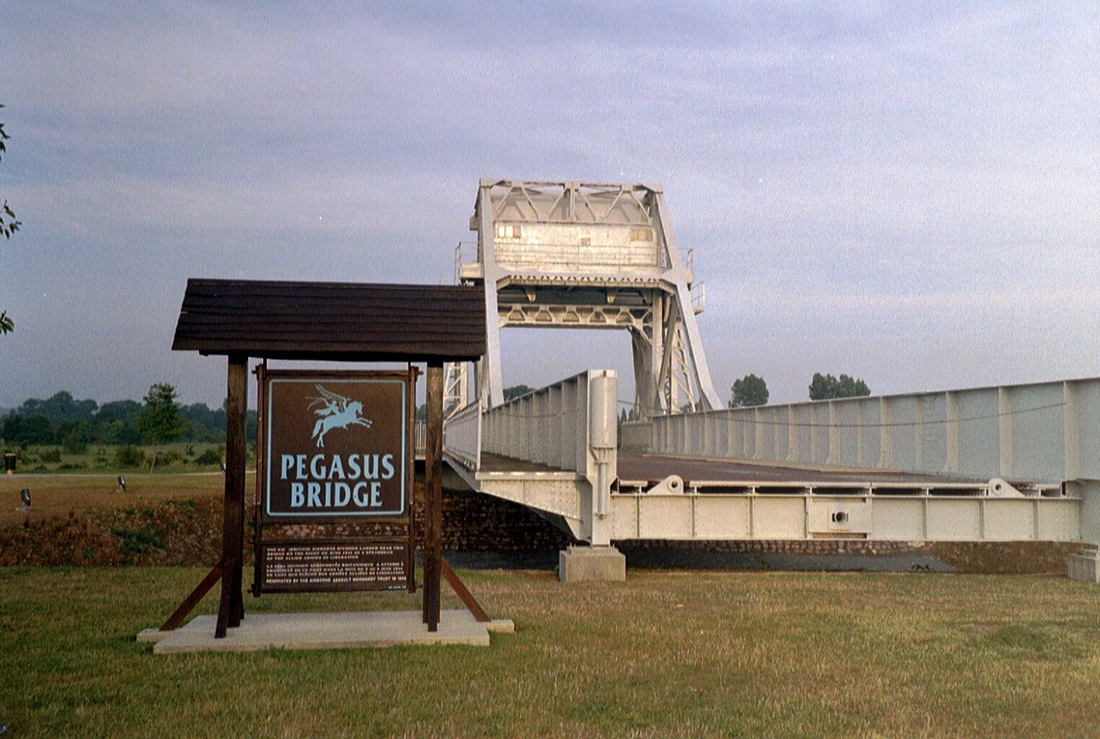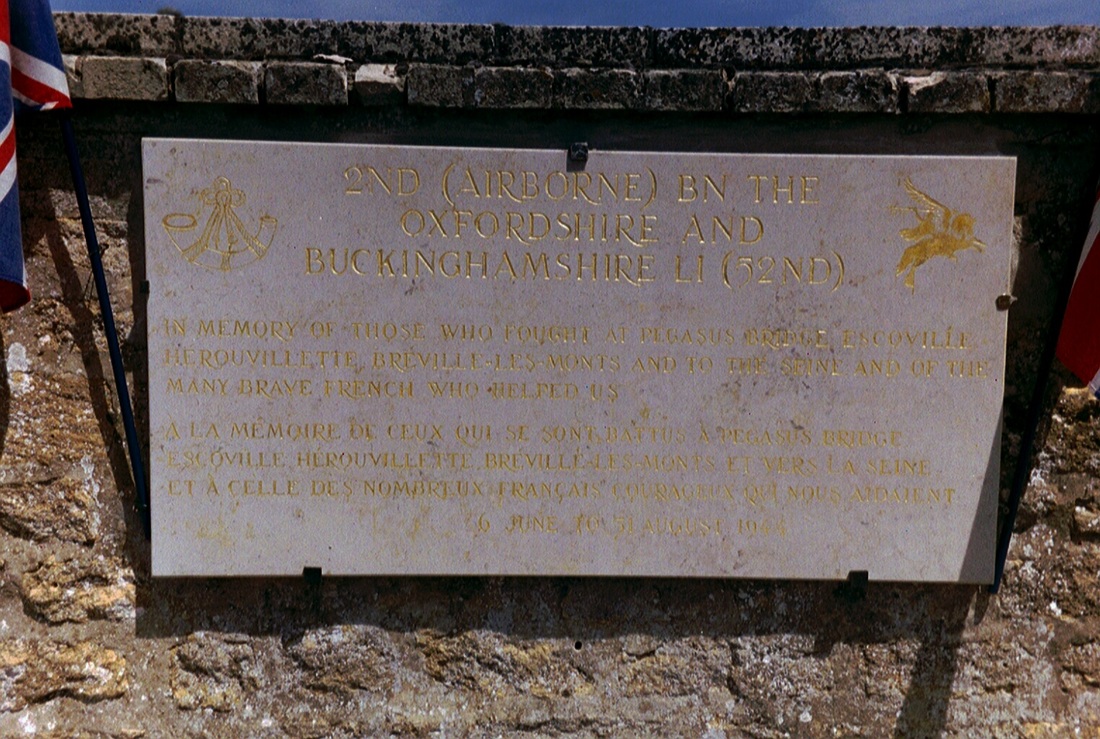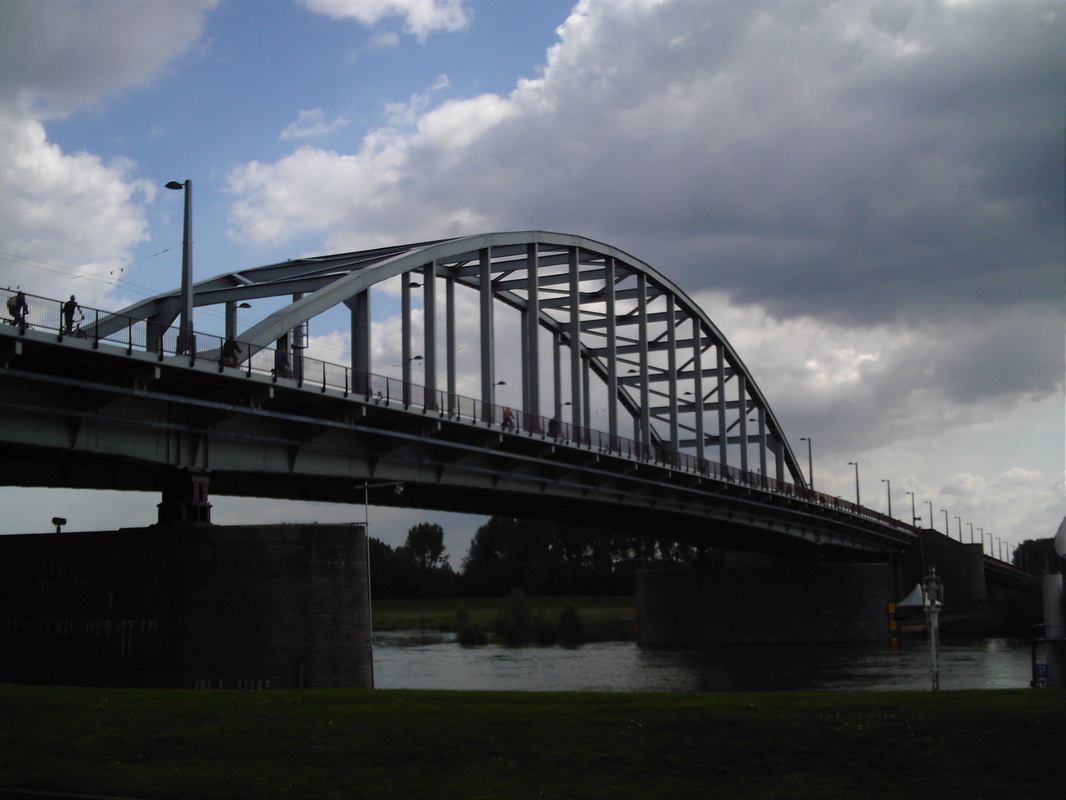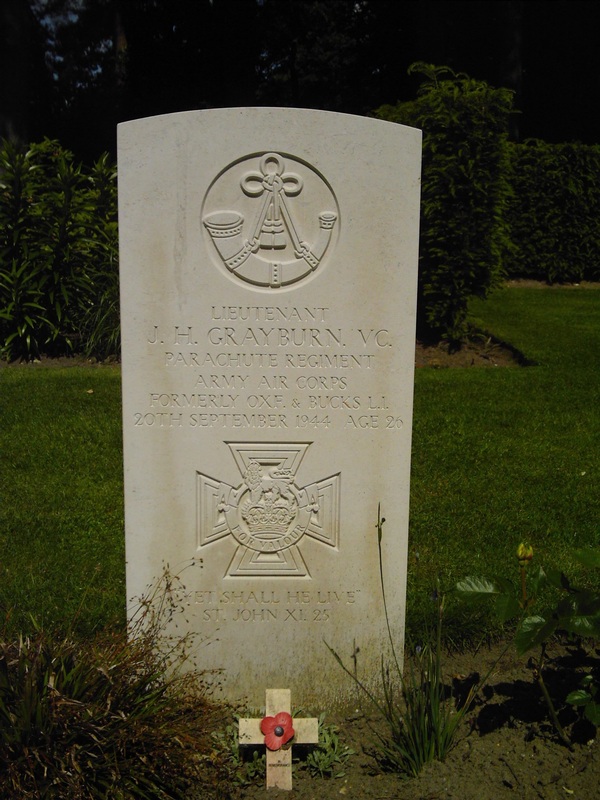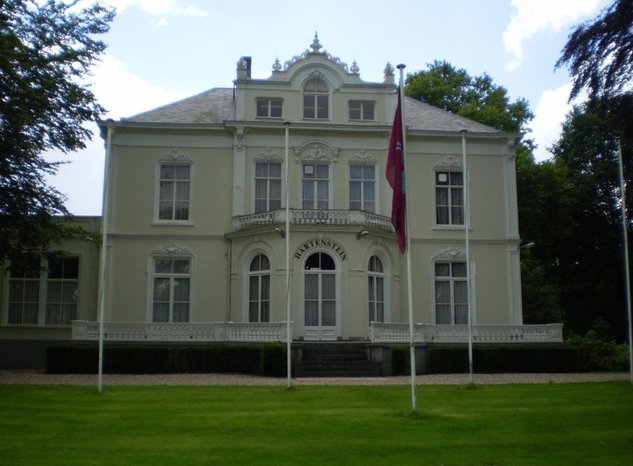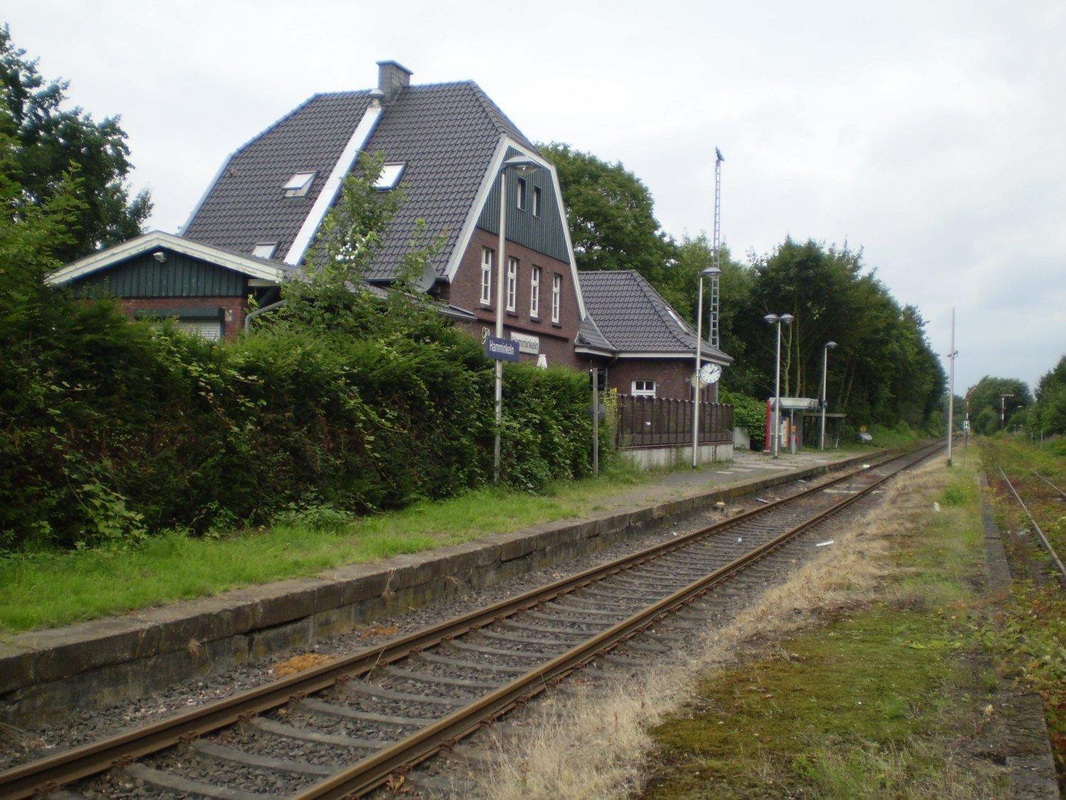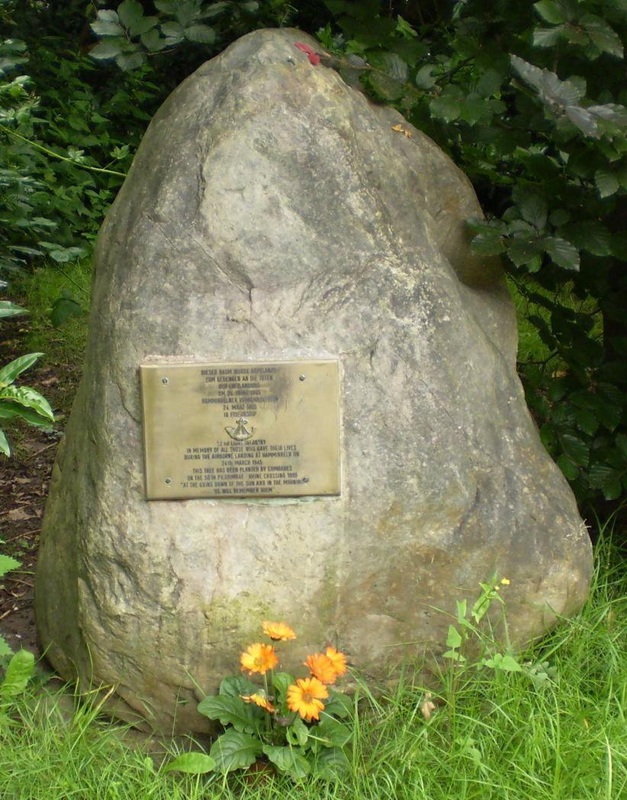- HOME
- SOLDIER RESEARCH
- WOLVERTONS AMATEUR MILITARY TRADITION
- BUCKINGHAMSHIRE RIFLE VOLUNTEERS 1859-1908
- BUCKINGHAMSHIRE BATTALION 1908-1947
- The Bucks Battalion A Brief History
- REGIMENTAL MARCH
-
1ST BUCKS 1914-1919
>
- 1914-15 1/1ST BUCKS MOBILISATION
- 1915 1/1ST BUCKS PLOEGSTEERT
- 1915-16 1/1st BUCKS HEBUTERNE
- 1916 1/1ST BUCKS SOMME JULY 1916
- 1916 1/1st BUCKS POZIERES WAR DIARY 17-25 JULY
- 1916 1/1ST BUCKS SOMME AUGUST 1916
- 1916 1/1ST BUCKS LE SARS TO CAPPY
- 1917 1/1ST BUCKS THE GERMAN RETIREMENT
- 1917 1/1st BUCKS TOMBOIS FARM
- 1917 1/1ST BUCKS THE HINDENBURG LINE
- 1917 1/1ST BUCKS 3RD BATTLE OF YPRES
- 1917 1/1st BUCKS 3RD YPRES 16th AUGUST
- 1917 1/1st BUCKS 3RD YPRES WAR DIARY 15-17 JULY
- 1917 1/1ST BUCKS 3RD BATTLE OF YPRES - VIMY
- 1917-18 1/1ST BUCKS ITALY
-
2ND BUCKS 1914-1918
>
- 1914-1916 2ND BUCKS FORMATION & TRAINING
- 1916 2/1st BUCKS ARRIVAL IN FRANCE
- 1916 2/1st BUCKS FROMELLES
- 1916 2/1st BUCKS REORGANISATION
- 1916-1917 2/1st BUCKS THE SOMME
- 1917 2/1st BUCKS THE GERMAN RETIREMENT
- 1917 2/1st BUCKS ST QUENTIN APRIL TO AUGUST 1917
- 1917 2/1st BUCKS 3RD YPRES
- 1917 2/1st BUCKS ARRAS & CAMBRAI
- 1918 2/1st BUCKS ST QUENTIN TO DISBANDMENT
-
1ST BUCKS 1939-1945
>
- 1939-1940 1BUCKS MOBILISATION & NEWBURY
- 1940 1BUCKS FRANCE & BELGIUM
- 1940 1BUCKS HAZEBROUCK
- HAZEBROUCK BATTLEFIELD VISIT
- 1940-1942 1BUCKS
- 1943-1944 1BUCKS PREPARING FOR D DAY
- COMPOSITION & ROLE OF BEACH GROUP
- BROAD OUTLINE OF OPERATION OVERLORD
- 1944 1ST BUCKS NORMANDY D DAY
- 1944 1BUCKS 1944 NORMANDY TO BRUSSELS (LOC)
- Sword Beach Gallery
- 1945 1BUCKS 1945 FEBRUARY-JUNE T FORCE 1st (CDN) ARMY
- 1945 1BUCKS 1945 FEBRUARY-JUNE T FORCE 2ND BRITISH ARMY
- 1945 1BUCKS JUNE 1945 TO AUGUST 1946
- BUCKS BATTALION BADGES
- BUCKS BATTALION SHOULDER TITLES 1908-1946
- 1939-1945 BUCKS BATTALION DRESS >
- ROYAL BUCKS KINGS OWN MILITIA
- BUCKINGHAMSHIRE'S LINE REGIMENTS
- ROYAL GREEN JACKETS
- OXFORDSHIRE & BUCKINGHAMSHIRE LIGHT INFANTRY 1741-1965
- OXF & BUCKS LI INSIGNIA >
- REGIMENTAL CUSTOMS & TRADITIONS >
- REGIMENTAL COLLECT AND PRAYER
- OXF & BUCKS LI REGIMENTAL MARCHES
- REGIMENTAL DRILL >
-
REGIMENTAL DRESS
>
- REGIMENTAL UNIFORM 1741-1896
- REGIMENTAL UNIFORM 1741-1914
- 1894 REGIMENTAL DRESS
- 1897 OFFICERS DRESS REGULATIONS
- 1900 DRESS REGULATIONS
- 1931 REGIMENTAL DRESS
- 1939-1945 REGIMENTAL DRESS
- 1950 OFFICERS DRESS REGULATIONS
- 1960 OFFICERS DRESS REGULATIONS (TA)
- 1960 REGIMENTAL MESS DRESS
- 1963 REGIMENTAL DRESS
- 1958-1969 REGIMENTAL DRESS
- HEADDRESS >
- REGIMENTAL CREST
- BATTLE HONOURS
- REGIMENTAL COLOURS >
- BRIEF HISTORY
- REGIMENTAL CHAPEL, OXFORD >
-
THE GREAT WAR 1914-1918
>
- REGIMENTAL BATTLE HONOURS 1914-1919
- OXF & BUCKS LI 1914-1919 SUMMARY INTRODUCTION
- 1 OXF & BUCKS LI 1914-1919 SUMMARY
- 2 OXF & BUCKS LI 1914-1919 SUMMARY
- 1/4 OXF & BUCKS LI 1914-1918 SUMMARY
- 2/4 OXF & BUCKS LI 1914-1918 SUMMARY
- 1/1 BUCKS BATTALION 1914-1918 SUMMARY
- 2/1 BUCKS BATTALION 1914-1918 SUMMARY
- 5 (SERVICE) OXF & BUCKS LI 1914-1918 SUMMARY
- 6 (SERVICE) OXF & BUCKS LI 1914-1918 SUMMARY
- 7 (SERVICE) OXF & BUCKS LI 1914-1918 SUMMARY
- 8 (SERVICE) OXF & BUCKS LI 1914-1918 SUMMARY
- 1st GREEN JACKETS (43rd & 52nd) 1958-1965
- 1ST GREEN JACKETS (43RD & 52ND) 1958-1965
- 1959 1ST GREEN JACKETS (43RD & 52ND)
- 1959 REGIMENTAL MARCH IN OXFORD
- 1959 DEMONSTRATION BATTALION
- 1960 1ST GREEN JACKETS (43RD & 52ND)
- 1961 1ST GREEN JACKETS (43RD & 52ND)
- 1961 THE LONGEST DAY
- 1962 1ST GREEN JACKETS (43RD & 52ND)
- 1963 1ST GREEN JACKETS (43RD & 52ND)
- 1963 CONVERSION TO “RIFLE” REGIMENT
- 1964 1ST GREEN JACKETS (43RD & 52ND)
- 1965 1ST GREEN JACKETS (43RD & 52ND)
- 1965 FORMATION OF ROYAL GREEN JACKETS
- REGULAR BATTALIONS 1741-1958
-
1st BATTALION (43rd LIGHT INFANTRY)
>
-
43rd LIGHT INFANTRY 1741-1914
>
- 43rd REGIMENT 1741-1802
- 43rd LIGHT INFANTRY 1803-1805
- 43rd LIGHT INFANTRY 1806-1809
- 43rd LIGHT INFANTRY 1809-1810
- 43rd LIGHT INFANTRY 1810-1812
- 43rd LIGHT INFANTRY 1812-1814
- 43rd LIGHT INFANTRY 1814-1818
- 43rd LIGHT INFANTRY 1818-1854
- 43rd LIGHT INFANTRY 1854-1863
- 43rd LIGHT INFANTRY 1863-1865
- 43rd LIGHT INFANTRY 1865-1897
- 43rd LIGHT INFANTRY 1899-1902
- 43rd LIGHT INFANTRY 1902-1914
-
1 OXF & BUCKS LI 1914-1919
>
-
1 OXF & BUCKS LI 1920-1939
>
- 1 OXF & BUCKS LI - 1919
- 1 OXF & BUCKS LI - 1920
- 1 OXF & BUCKS LI - 1921
- 1 OXF & BUCKS LI - 1922
- 1 OXF & BUCKS LI - 1923
- 1 OXF & BUCKS LI - 1924
- 1 OXF & BUCKS LI - 1925
- 1 OXF & BUCKS LI - 1926
- 1 OXF & BUCKS LI - 1927
- 1 OXF & BUCKS LI - 1928
- 1 OXF & BUCKS LI - 1929
- 1 OXF & BUCKS LI - 1930
- 1 OXF & BUCKS LI - 1931
- 1 OXF & BUCKS LI - 1932
- 1 OXF & BUCKS LI - 1933
- 1 OXF & BUCKS LI - 1934
- 1 OXF & BUCKS LI - 1935
- 1 OXF & BUCKS LI - 1936
- 1 OXF & BUCKS LI - 1937
- 1 OXF & BUCKS LI - 1938
- 1 OXF & BUCKS LI - 1939
- 1 OXF & BUCKS LI 1939-1945 >
-
1 OXF & BUCKS 1946-1958
>
- 1 OXF & BUCKS LI - 1946
- 1 OXF & BUCKS LI - 1947
- 1 OXF & BUCKS LI - 1948
- 1948 FREEDOM PARADES
- 1 OXF & BUCKS LI - 1949
- 1 OXF & BUCKS LI - 1950
- 1 OXF & BUCKS LI - 1951
- 1 OXF & BUCKS LI - 1952
- 1 OXF & BUCKS LI - 1953
- 1 OXF & BUCKS LI - 1954
- 1 OXF & BUCKS LI - 1955
- 1 OXF & BUCKS LI - 1956
- 1 OXF & BUCKS LI - 1957
- 1 OXF & BUCKS LI - 1958
-
43rd LIGHT INFANTRY 1741-1914
>
-
2nd BATTALION (52nd LIGHT INFANTRY)
>
- 52nd LIGHT INFANTRY 1755-1881 >
- 2 OXF LI 1881-1907
- 2 OXF & BUCKS LI 1908-1914
-
2 OXF & BUCKS LI 1914-1919
>
-
2 OXF & BUCKS LI - 1919-1939
>
- 2 OXF & BUCKS LI - 1919
- 2 OXF & BUCKS LI - 1920
- 2 OXF & BUCKS LI - 1921
- 2 OXF & BUCKS LI - 1922
- 2 OXF & BUCKS LI - 1923
- 2 OXF & BUCKS LI - 1924
- 2 OXF & BUCKS LI - 1925
- 2 OXF & BUCKS LI - 1926
- 2 OXF & BUCKS LI - 1927
- 2 OXF & BUCKS LI - 1928
- 2 OXF & BUCKS LI - 1929
- 2 OXF & BUCKS LI - 1930
- 2 OXF & BUCKS LI - 1931
- 2 OXF & BUCKS LI - 1932
- 2 OXF & BUCKS LI - 1933
- 2 OXF & BUCKS LI - 1934
- 2 OXF & BUCKS LI - 1935
- 2 OXF & BUCKS LI - 1936
- 2 OXF & BUCKS LI - 1937
- 2 OXF & BUCKS LI - 1938
- 2 OXF & BUCKS LI - 1939
-
2 OXF & BUCKS LI 1939-1945
>
- 1939-1941
- 1941-1943 AIRBORNE INFANTRY
- 1944 PREPARATION FOR D DAY
- 1944 PEGASUS BRIDGE-COUP DE MAIN
- Pegasus Bridge Gallery
- Horsa Bridge Gallery
- COUP DE MAIN NOMINAL ROLL
- MAJOR HOWARDS ORDERS
- 1944 JUNE 6
- D DAY ORDERS
- 1944 JUNE 7-13 ESCOVILLE & HEROUVILETTE
- Escoville & Herouvillette Gallery
- 1944 JUNE 13-AUGUST 16 HOLDING THE BRIDGEHEAD
- 1944 AUGUST 17-31 "PADDLE" TO THE SEINE
- "Paddle To The Seine" Gallery
- 1944 SEPTEMBER ARNHEM
- OPERATION PEGASUS 1
- 1944/45 ARDENNES
- 1945 RHINE CROSSING
- OPERATION VARSITY - ORDERS
- OPERATION VARSITY BATTLEFIELD VISIT
- 1945 MARCH-JUNE
- 2 OXF & BUCKS LI DRESS 1940-1945 >
- 2 OXF & BUCKS LI 1946-1947 >
-
1st BATTALION (43rd LIGHT INFANTRY)
>
- MILITIA BATTALIONS
- TERRITORIAL BATTALIONS
- WAR RAISED/SERVICE BATTALIONS 1914-18 & 1939-45
-
5th, 6th, 7th & 8th (SERVICE) 1914-1918
>
-
6th & 7th Bns OXF & BUCKS LI 1939-1945
>
- 6th Bn OXF & BUCKS LI 1940-1945 >
-
7th Bn OXF & BUCKS LI 1940-1945
>
- 7th Bn OXF & BUCKS LI JUNE 1940-JULY 1942
- 7th Bn OXF & BUCKS LI JULY 1942 – JUNE 1943
- 7th Bn OXF & BUCKS LI JULY 1943–OCTOBER 1943
- 7th Bn OXF & BUCKS LI OCTOBER 1943–DECEMBER 1943
- 7th Bn OXF & BUCKS LI DECEMBER 1943-JUNE 1944
- 7th Bn OXF & BUCKS LI JANUARY 1944-JUNE 1944
- 7th Bn OXF & BUCKS LI JUNE 1944–JANUARY 1945
-
5th, 6th, 7th & 8th (SERVICE) 1914-1918
>
- "IN MY OWN WORDS"
- CREDITS
The Tale of a Few Bridges
By Steve Berridge
(An Article I originally wrote in 2007 and was published in "Ham and Jam" the newsletter of the Royal Green Jackets Association, Milton Keynes Branch and the "Somme Bugle" newsletter of the Somme Branch of the Royal British Legion 2009)
2009 saw the 65th anniversary of Operation Overlord, the invasion of Normandy, in effect the beginning of the end of the war in Europe and the Operation Market Garden a bold attempt to end the war by the end of 1944. A common dominator for both of these actions is the presence of members of my family regiment the Oxfordshire and Buckinghamshire Light Infantry. Below is a short account of the actions of the 2nd (Airborne) Battalion of the regiment from D Day to VE Day which I hope will be of interest to readers.
NORMANDY (Operation OVERLORD)
At around 15 minutes past midnight on the night of 5th/6th June 1944 Six Horsa Gliders carrying members of Major John Howard’s reinforced Letter D Company of the 2nd (Airborne) Battalion of the Oxfordshire and Buckinghamshire Light Infantry (known regimentally as the 52nd due to the regimental affectation of calling the two regular battalions by their pre 1881 titles:- 1st Battalion were originally the 43rd Light Infantry and the 2nd Battalion the 52nd Light Infantry) began landing in Normandy, their task was to capture two bridges over the Orne River and the Caen Canal, vital to the holding of the left flank of the invasion, and to hold them until relieved by the 7th (Light Infantry) Battalion of the Parachute Regiment. At least that was the plan, in the event only five gliders touched down near the two objectives; number 4 glider landed further East near the bridges at Varaville on the River Dives from where they had to make their way across the flooded Dives valley having many adventures before eventually rejoining Letter D Company on the 7th June.
The Canal and River bridges at Benouville were captured intact after a brisk fire fight and the code words for the capture of the intact bridges was sent out, in the words of the wireless operator Cpl Ted Tappenden, “ hello four dog, Ham and Jam, Ham and bloody Jam”. The “coup de main” party had lost two of its number killed in the assault, Lieutenant Den Brotheridge who died from a gunshot wound to the neck and L/Cpl Greenhaulgh who drowned in the “pond” after being thrown out of his glider when it crash landed.
At around 3am the “Bridge Prangers” were relieved by 7 PARA who took over responsibility for the bridges and under whose command Letter D Company now came. Lord Lovatt’s Commandos moved through the position around 1330hrs but it was not until 2115hrs that a relief force from the 3rd Division that had landed at Sword Beach reached the bridges.
During their “Longest Day” the defenders had been in constant action repelling counter attacks and under constant sniping.
By Steve Berridge
(An Article I originally wrote in 2007 and was published in "Ham and Jam" the newsletter of the Royal Green Jackets Association, Milton Keynes Branch and the "Somme Bugle" newsletter of the Somme Branch of the Royal British Legion 2009)
2009 saw the 65th anniversary of Operation Overlord, the invasion of Normandy, in effect the beginning of the end of the war in Europe and the Operation Market Garden a bold attempt to end the war by the end of 1944. A common dominator for both of these actions is the presence of members of my family regiment the Oxfordshire and Buckinghamshire Light Infantry. Below is a short account of the actions of the 2nd (Airborne) Battalion of the regiment from D Day to VE Day which I hope will be of interest to readers.
NORMANDY (Operation OVERLORD)
At around 15 minutes past midnight on the night of 5th/6th June 1944 Six Horsa Gliders carrying members of Major John Howard’s reinforced Letter D Company of the 2nd (Airborne) Battalion of the Oxfordshire and Buckinghamshire Light Infantry (known regimentally as the 52nd due to the regimental affectation of calling the two regular battalions by their pre 1881 titles:- 1st Battalion were originally the 43rd Light Infantry and the 2nd Battalion the 52nd Light Infantry) began landing in Normandy, their task was to capture two bridges over the Orne River and the Caen Canal, vital to the holding of the left flank of the invasion, and to hold them until relieved by the 7th (Light Infantry) Battalion of the Parachute Regiment. At least that was the plan, in the event only five gliders touched down near the two objectives; number 4 glider landed further East near the bridges at Varaville on the River Dives from where they had to make their way across the flooded Dives valley having many adventures before eventually rejoining Letter D Company on the 7th June.
The Canal and River bridges at Benouville were captured intact after a brisk fire fight and the code words for the capture of the intact bridges was sent out, in the words of the wireless operator Cpl Ted Tappenden, “ hello four dog, Ham and Jam, Ham and bloody Jam”. The “coup de main” party had lost two of its number killed in the assault, Lieutenant Den Brotheridge who died from a gunshot wound to the neck and L/Cpl Greenhaulgh who drowned in the “pond” after being thrown out of his glider when it crash landed.
At around 3am the “Bridge Prangers” were relieved by 7 PARA who took over responsibility for the bridges and under whose command Letter D Company now came. Lord Lovatt’s Commandos moved through the position around 1330hrs but it was not until 2115hrs that a relief force from the 3rd Division that had landed at Sword Beach reached the bridges.
During their “Longest Day” the defenders had been in constant action repelling counter attacks and under constant sniping.
The rest of the Battalion arrived by glider during the evening of the 6th June.
During the following days the battalion suffered many casualties in actions around Escoville and Herouvillette and in the holding of the left flank of the Normandy Bridgehead and were in continuous action in the line following the breakout and the advance to the Seine until being returned to England at the beginning of September 1944.
During the following days the battalion suffered many casualties in actions around Escoville and Herouvillette and in the holding of the left flank of the Normandy Bridgehead and were in continuous action in the line following the breakout and the advance to the Seine until being returned to England at the beginning of September 1944.
ARNHEM (Operation MARKET GARDEN)
The Battle of Arnhem and the subsequent defence of the Oosterbeek Perimeter have passed into legend and the subject of numerous books and films, meaning that the story of the Operation is quite well known by most who have an interest in military history, what is probably less known is the contribution of the regiment in Operation Market Garden.
The Battle of Arnhem and the subsequent defence of the Oosterbeek Perimeter have passed into legend and the subject of numerous books and films, meaning that the story of the Operation is quite well known by most who have an interest in military history, what is probably less known is the contribution of the regiment in Operation Market Garden.
The“Bridge Too Far” The John Frost Bridge at Arnhem
The objectives of the 1st Airborne Division were to capture and hold the bridges over the river Rhine at Arnhem, however in the end only a force slightly over battalion strength managed to reach and hold the northern approaches to the Road Bridge. Only the Second Parachute Battalion (less C company who were separated in the town), reinforced by part of 1st Para Brigade HQ, members of 1 and 3 Parachute Battalions and some attached arms personnel actually reached the objective.
Among the Officers of the 2nd Parachute Battalion were some ex Oxf & Bucks officers, the Battalion Second in Command Major David Wallis had served with 4 Oxf & Bucks LI, while A Company was commanded by Major Digby Tatham-Warter (ex 52nd) who took over as battalion 2ic when Major Wallis was killed.
When training his Company in the UK and remembering his Light Infantry roots, Major Tatham-Warter concerned about the effectiveness of radios had set up a system of using Bugles to send signals within his company that were used to good effect on the march to the bridge and in its defence. After the withdrawal of the remnants of the Division across the Rhine at the end of the battle Tatham-Warter was involved in organising many of the evading Airborne troops left behind to get back to Allied lines in “Operation Pegasus”. The umbrella wielding officer in the film “A Bridge Too Far” is based on Major Tatham-Warter who carried his umbrella because he could not remember the password.
Also in A Company was Lt John (Jack) Grayburn (ex 43rd) who was to win a posthumous Victoria Cross at the bridge.
Among the Officers of the 2nd Parachute Battalion were some ex Oxf & Bucks officers, the Battalion Second in Command Major David Wallis had served with 4 Oxf & Bucks LI, while A Company was commanded by Major Digby Tatham-Warter (ex 52nd) who took over as battalion 2ic when Major Wallis was killed.
When training his Company in the UK and remembering his Light Infantry roots, Major Tatham-Warter concerned about the effectiveness of radios had set up a system of using Bugles to send signals within his company that were used to good effect on the march to the bridge and in its defence. After the withdrawal of the remnants of the Division across the Rhine at the end of the battle Tatham-Warter was involved in organising many of the evading Airborne troops left behind to get back to Allied lines in “Operation Pegasus”. The umbrella wielding officer in the film “A Bridge Too Far” is based on Major Tatham-Warter who carried his umbrella because he could not remember the password.
Also in A Company was Lt John (Jack) Grayburn (ex 43rd) who was to win a posthumous Victoria Cross at the bridge.
The following details are given in the London Gazette of 23rd January, 1945:- Lt. Grayburn was a platoon commander of the Parachute Battalion which was dropped on September 17th, 1944, with orders to seize and hold the bridge over theRhine at Arnhem. He, with his platoon, was to capture
the southern end. Lt. Grayburn was wounded in the shoulder almost immediately, but he directed and pressed the assault until casualties became so heavy that he was ordered to withdraw. Later, he successfully organized the occupation of a house vital to the defence of the bridge. Although heavily attacked throughout the next day and night, thanks to Lt. Grayburn's courage, leadership, and skill in disposing his men, the house was held until it was set on fire on September 19th, and had to be evacuated. Lt. Grayburn then formed a fighting force of elements of all arms, including the remainder of his company. Although wounded again, this time in the back, he refused to be evacuated. When tank attacks, against which he had no defence, finally forced his retreat on September 20th, he stood up in full view of the enemy, and directed the withdrawal of his men to the main defensive perimeter. He was killed that night. For nearly four days, despite pain and weakness from his wounds, shortage of food and lack of sleep, Lt. Grayburn displayed supreme and unflagging gallantry and determination. Without his inspiring leadership the Arnhem bridge could not have been held for so long.
The regiment was also represented at Headquarters, 1st Parachute Brigade, by its Commander Brigadier Gerald Lathbury, formerly of the 43rd and the Brigade Staff Captain, Captain Edward Moy-Thomas from the 52nd.
the southern end. Lt. Grayburn was wounded in the shoulder almost immediately, but he directed and pressed the assault until casualties became so heavy that he was ordered to withdraw. Later, he successfully organized the occupation of a house vital to the defence of the bridge. Although heavily attacked throughout the next day and night, thanks to Lt. Grayburn's courage, leadership, and skill in disposing his men, the house was held until it was set on fire on September 19th, and had to be evacuated. Lt. Grayburn then formed a fighting force of elements of all arms, including the remainder of his company. Although wounded again, this time in the back, he refused to be evacuated. When tank attacks, against which he had no defence, finally forced his retreat on September 20th, he stood up in full view of the enemy, and directed the withdrawal of his men to the main defensive perimeter. He was killed that night. For nearly four days, despite pain and weakness from his wounds, shortage of food and lack of sleep, Lt. Grayburn displayed supreme and unflagging gallantry and determination. Without his inspiring leadership the Arnhem bridge could not have been held for so long.
The regiment was also represented at Headquarters, 1st Parachute Brigade, by its Commander Brigadier Gerald Lathbury, formerly of the 43rd and the Brigade Staff Captain, Captain Edward Moy-Thomas from the 52nd.
The Hartenstein Hotel
Originally the 52nd had formed part of 1st Airlanding Brigade of the 1st British Airborne Division and at that time were tasked with providing the Divisional Defence Platoon. This they continued to do when the 52nd were transferred to the 6th Airlanding Brigade on the formation of the 6th British Airborne Division in 1943.
By the time of the Battle of Arnhem in September 1944 the Divisional Defence Platoon although by now slightly watered down by the inclusion of men of other units and commanded by a Parachute Regiment officer was still in the main made up of men of the 52nd.
During the defence of the Oosterbeek perimeter to where 1st Airborne Division withdrew after it had been cut to pieces trying to get to the famous “Bridge Too far” the Divisional Defence Platoon was engaged in the defence of the Hartenstein Hotel which had become the Divisional Headquarters.
Eventually after fighting solidly for nine days the remnants of the Division were withdrawn across the Rhine.
ARDENNES
In December 1944 the 52nd together with the 6th Airborne Division were rushed from England to the Ardennes to help hold the line during what became known as the Battle of the Bulge.
THE RHINE CROSSING (Operation VARSITY)
At 9pm on the evening of 23rd March 1945 British troops made an assault
river crossing of the Rhine, Operation Plunder has begun. By the early hours of 24th March allied ground units had secured a number of crossings on the eastern bank of the Rhine.
At around 10am on the 24th March two allied Airborne Divisions, the 6th British Airborne Division and the 17th US Airborne Division began landing in Germany this was Operation Varsity. The objectives of the 6th Airborne Division were to prevent German reinforcements known to be in the area of Hamminkeln and Ringenburg, reaching the Allied bridgehead on the Rhine.
The 52nd’s task was to land on LZ-O, to the north of Hamminkeln, and secure a road and a railway bridge (the 52nd seem to have an obsession with bridges) across the River Issel. The Battalion was the first unit of the
6th Airlanding Brigade to land, and their vulnerable gliders became targets for all of the anti-aircraft weapons in the immediate area. As a result casualties were enormously heavy, gliders were shot out of the sky and others collided or crash landed. During the 10 minutes that it took for the battalion to land it lost half of its fighting strength. Those who survived quickly disembarked and began to deal with the anti-aircraft batteries.
With all of the Battalion's companies fighting independent actions all over the landing area, the scene was one of great confusion for several hours. Nevertheless by 11:00, all objectives had been taken. "B" and "C" Companies had successfully captured the road and the railway bridges respectively, and "A" Company were dug-in around the intersection of the two roads that ran across the zone. By the end of the day the Battalion had lost all but a third of its strength, the regimental chronicle records 400 casualties for 24th March of which 103 were killed (mainly in the gliders)
Hamminkeln Railway Station
The 52nd Memorial at Hamminkeln
On the 26th March, the 6th Airlanding Brigade led the Division's advance out of the bridgehead.
The 52nd along with the remainder of the 6th Airborne Division living up to the Divisional motto “Go To It” continued the advance into Germany carrying out an assault river crossing of the River Weser, through Minden, Celle, across the River Elbe and eventually met up with the Russians at Wismar on the Baltic on the 2nd May 1945.
Proudly powered by Weebly
